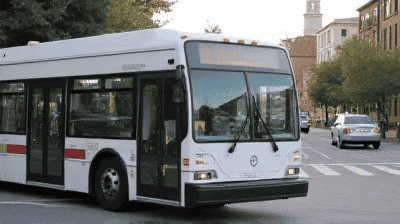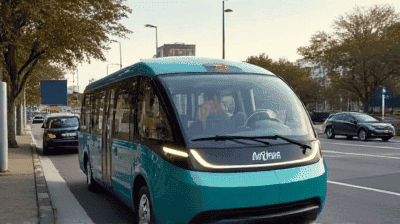
As the world grapples with the escalating effects of climate change, the transportation sector has emerged as a key contributor to greenhouse gas emissions. In fact, it accounts for a significant portion of global carbon dioxide emissions, primarily due to the reliance on fossil fuels. In response to this pressing issue, sustainable transportation solutions are gaining traction, with electric vehicles (EVs) and public transit systems at the forefront of efforts to mitigate climate change.
Transportation is one of the largest sources of greenhouse gas emissions worldwide, with road vehicles being the primary culprits. According to the International Energy Agency, transport-related emissions accounted for approximately 24 percent of global CO2 emissions in recent years. This includes emissions from passenger cars, freight trucks, buses, and aviation.
The reliance on gasoline and diesel fuels is a primary driver of these emissions. Burning fossil fuels releases not only CO2 but also other harmful pollutants, contributing to air quality deterioration and public health challenges.
To meet international climate goals, particularly those outlined in the Paris Agreement, significant reductions in transportation emissions are necessary. The transition to sustainable transportation solutions such as electric vehicles and enhanced public transit systems is essential to achieving these goals. By reducing reliance on fossil fuels and adopting cleaner alternatives, we can significantly cut emissions and pave the way for a more sustainable future.

Electric vehicles are defined as vehicles that are partially or fully powered by electricity. They come in various forms, including:
One of the primary benefits of electric vehicles is their potential for significant emissions reductions. Here are some key points highlighting their environmental advantages:
BEVs produce no tailpipe emissions, which means they do not release harmful pollutants such as nitrogen oxides and particulates that contribute to smog and respiratory illnesses. This is particularly beneficial in urban areas with high traffic congestion and pollution levels.
While some emissions are associated with the production of electric vehicles and the generation of electricity, studies show that, on average, EVs have a lower total lifecycle carbon footprint compared to conventional gasoline or diesel vehicles. As the electricity grid becomes greener through renewable energy sources, the emissions associated with EVs decline further.
Electric vehicles are more energy-efficient than their gasoline counterparts. According to the U.S. Department of Energy, EVs convert over 60 percent of the electrical energy from the grid to power at the wheels, while conventional gasoline vehicles only convert about 20 percent of the energy stored in gasoline. This increased efficiency translates to fewer emissions overall.
The environmental benefits of EVs can be amplified when they are charged using renewable energy sources such as solar, wind, or hydroelectric power. This synergy not only reduces emissions associated with electricity generation but also supports the transition to a sustainable energy grid.
To fully realize the potential of electric vehicles, comprehensive infrastructure development is crucial. This includes the installation of:
Governments play a vital role in promoting the adoption of electric vehicles through various incentives and policies. Examples include:
Public transit encompasses various modes of transportation that are available to the public, including buses, trains, subways, and trams. These systems provide accessible, affordable, and efficient transportation options for communities.
Public transit plays a crucial role in reducing emissions from the transportation sector. Here are some key advantages:
Public transit systems can transport a large number of passengers simultaneously, significantly reducing the number of single-occupancy vehicles on the road. This leads to fewer emissions per passenger-mile traveled.
By encouraging people to use public transportation instead of personal vehicles, cities can alleviate traffic congestion. Less congestion means shorter travel times and lower emissions due to reduced idling and stop-and-go traffic.
Public transit is generally more energy-efficient than individual car travel. According to the American Public Transportation Association, public transit reduces greenhouse gas emissions by 45 million metric tons annually in the United States alone.
To enhance the environmental benefits of public transit, many systems are transitioning to more sustainable technologies:
Many cities are adopting electric buses and rail systems to further reduce emissions associated with public transit. Electric buses produce zero tailpipe emissions and, when coupled with renewable energy sources, can significantly decrease the environmental impact of public transportation.
Investing in and expanding public transit networks can improve accessibility and connectivity. Well-designed systems that serve communities effectively can encourage more people to choose public transit over personal vehicles.
Collaborative approaches that integrate public transit with other modes of sustainable transportation, such as biking and walking, create a more comprehensive mobility ecosystem. This can include:
Government funding, policies, and incentives are key to enhancing public transportation systems. Examples include:

The combination of electric vehicles and sustainable public transit creates synergies that enhance overall emissions reduction efforts:
Cities can encourage a shift toward sustainable transportation by integrating electric vehicles into existing public transit frameworks. For example, electric taxis and rideshares can complement public transportation by providing first and last-mile connectivity.
Shared mobility services further enhance transportation efficiency, reducing the need for personal vehicle ownership. By offering electric ridesharing options in conjunction with public transit, cities can improve accessibility and reduce emissions.
Utilizing data analytics and smart technologies can optimize transportation networks. Real-time data on public transit routes and electric vehicle availability can help users make informed decisions, encouraging the use of sustainable options.
Despite the potential benefits of electric vehicles and public transit, several challenges remain:
Building the necessary infrastructure for electric vehicles and enhancing public transit systems requires significant investment and long-term planning. This can be a barrier for many municipalities and governments.
Changing public perception of electric vehicles and public transit can be challenging. Education and outreach campaigns are necessary to highlight the benefits and dispel myths surrounding these sustainable options.
The transition to electric vehicles and improved public transit systems often requires initial funding and financial incentives. Securing the necessary resources can be a hurdle for many communities, particularly those with budget constraints.
Advancements in battery technology and renewable energy generation are essential for maximizing the environmental benefits of electric vehicles. Continuing to invest in research and development is crucial for overcoming these technological barriers.

Sustainable transportation is critical for addressing the challenges posed by climate change and reducing greenhouse gas emissions. Electric vehicles and public transit systems offer promising solutions that can work together to create a cleaner, more efficient, and accessible transportation landscape.
As cities and countries transition to more sustainable transportation options, it is imperative to invest in infrastructure, policies, and public awareness campaigns to support this shift. By embracing electric vehicles and enhancing public transit systems, we can pave the way for a more sustainable future, reduce emissions, and improve the quality of life for communities around the world.